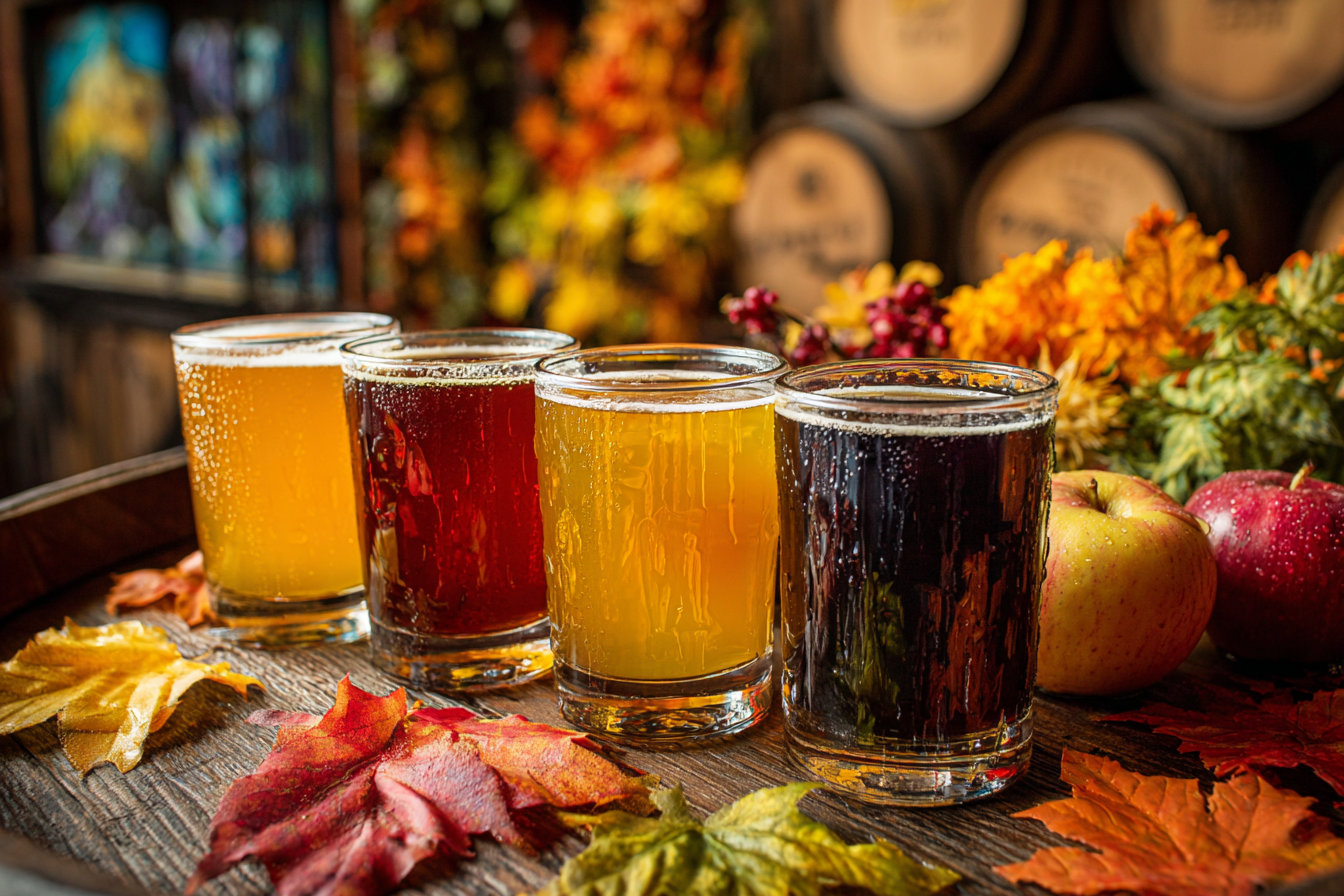American wheat beer is renowned for its refreshing qualities and approachable flavors, making it a favorite among craft beer enthusiasts. However, this style is far more dynamic than just a seasonal summer option. Brewers across the United States creatively adapt wheat beer recipes throughout the year, incorporating seasonal ingredients and modifying brewing techniques to craft distinct variations that celebrate and complement each season. Whether it’s the zesty brightness of summer or the warm, spiced aromas of winter, American wheat beer offers a variety of experiences that evolve as the year unfolds.
Seasonal Brewing Trends in American Wheat Beer
Seasonal brewing has become a popular practice among craft breweries, providing an opportunity to experiment with ingredients that are fresh and readily available at different times of the year. Wheat beer, with its inherent adaptability and mild malt profile, serves as an excellent base for these creative expressions. The trend is not just about adding flavors but also about capturing the essence and mood of a season—be it the lively energy of summer or the cozy comfort of autumn and winter.
Generally, seasonal wheat beers differ in adjunct ingredients, malt composition, yeast strains, and even carbonation levels to enhance the sensory experience appropriate to the climate and consumer preferences during each part of the year.
Popular Seasonal Adjuncts for Wheat Beer
Seasonal adjuncts are ingredients added alongside the traditional wheat and barley malts to infuse new flavors, aromas, or textures into the beer. These adjuncts reflect the seasons, drawing from fresh produce, spices, and herbs commonly associated with particular times of the year. Some of the most popular adjuncts include:
- Citrus fruits: Lemons, oranges, limes, and grapefruits deliver bright, acidic notes that are perfect for lightening wheat beers in warmer months.
- Spices: Cinnamon, nutmeg, clove, and allspice bring warmth and complexity, often used in fall and winter varieties.
- Herbs and botanicals: Lavender, basil, mint, and rosemary offer subtle herbal nuances ideal for springtime brews.
- Fruits: Seasonal fruits such as cherries, peaches, blueberries, and cranberries enhance color and impart nuanced fruitiness on different seasonal renditions.
- Honey and maple syrup: These natural sweeteners enrich the malt profile, adding smooth sweetness and depth, especially in colder months.
Brewers meticulously balance these adjuncts to ensure the wheat beer’s signature character shines through, maintaining a delicate harmony between innovation and tradition.
Summer Varieties: Citrus and Light Notes
In the heat of summer, American wheat beer shines as a thirst-quenching choice. The busy, sun-drenched season calls for brews that are crisp, finely carbonated, and refreshing with energetic flavors. Summer wheat beers often feature a burst of citrus zest or added peel, enhancing the light bready malt backbone with crisp acidity and aromatic brightness.
Popular citrus adjuncts such as lemon, orange, and grapefruit create highly invigorating profiles. Some brewers also incorporate tropical fruit notes like pineapple or passion fruit, blending the citrus with mild sweetness to elevate refreshment. Light body and lower alcohol levels are typically preferred to encourage easy drinking during hot days.
Examples include:
- Orange blossom wheat beers with floral hints
- Salt-strained wheat beers with lime for beach-inspired refreshment
- Sessionable wheat ales with added grapefruit zest for a tangy punch
Autumn and Winter Versions: Spices and Richer Malts
As temperatures drop and leaves turn, American wheat beer transforms to meet the tastes of cooler weather drinkers. Autumn and winter wheat beers often shift toward richer malt profiles, incorporating darker Munich or caramel malts that provide toasty, bready, or even slightly sweet flavors. The subtle complexity lends a heartier character, suitable for sipping by a fireside or pairing with seasonal foods.
Spices become a central feature during this time. Classic fall spices such as cinnamon, clove, nutmeg, and allspice add warmth and aromatic layers, evoking holiday traditions and comforting scents. Pumpkin or apple adjuncts are also popular, complementing the malt base with fruity sweetness and a bit of tartness.
Winter wheat beers might also feature adjuncts like maple syrup or molasses, which reinforce richness and smoothness while highlighting cozy sweetness without overpowering the yeast-driven wheat character.
Some styles often seen include:
- Spiced wheat ales with pumpkin and autumn spices
- Winter wheat stouts or “winter warmers” blending grain and spice complexity
- Holiday-themed wheat beers with clove and cinnamon accents
Spring Releases: Floral and Herbal Twists
Spring invites refreshment with renewed life and blooming flora, prompting brewers to highlight delicate herbal and floral ingredients in their wheat beers. The lighter profile of wheat beers pairs beautifully with subtle notes like lavender, chamomile, elderflower, and hibiscus, which impart a gentle aroma and a nuanced taste, evoking the freshness of the season.
Herbs such as mint, basil, and rosemary are sometimes introduced to provide a clean, green brightness that contrasts the malt subtlety and makes the beer distinctly springtime. These ingredients can also add complexity without overwhelming the smooth, soft character inherent in wheat beers.
Many breweries also experiment with wildflower honey or incorporate local spring fruits such as strawberries or rhubarb, creating limited releases that celebrate local terroir and seasonal bounty. This approach makes spring wheat beers not only a sensory delight but also a way to connect with the community and environment.
How Breweries Market Seasonal Wheat Beers
Marketing plays a crucial role in the success of seasonal wheat beers, helping breweries create excitement and a sense of occasion around their limited-time offerings. Breweries often craft compelling stories around the seasonal varieties, highlighting the unique ingredients, brewing techniques, or inspiration drawn from local traditions.
Visual branding frequently features seasonal colors and imagery—bright citrus tones for summer, warm amber hues with leaf motifs for autumn, frosted designs for winter, and fresh blooming illustrations for spring—to visually attract customers. Limited packaging like special labels, seasonal cans, or collectible bottles emphasize exclusivity.
In addition, many breweries launch seasonal wheat beers at festivals or special events to maximize exposure. Social media campaigns and collaborations with local farmers or food artisans also help build buzz and educate consumers about the flavor profiles and best serving suggestions.
Tips for Enjoying and Collecting Seasonal Varieties
Savoring seasonal varieties of American wheat beer is not only about tasting but experiencing how the beer evolves with the seasons. Here are some tips to enhance enjoyment and collection:
- Drink fresh: Wheat beers especially are best enjoyed fresh to appreciate delicate flavors and aromatics. Check release dates and consume within recommended times.
- Temperature matters: Serve wheat beers chilled but not overly cold to unlock flavors. Around 45-50°F allows the nuances in spices or herbs to shine.
- Pair seasonally: Match beers with seasonal dishes—citrus wheat beers pair well with seafood and salads, autumn spiced ones complement roasted meats and pumpkin desserts, while floral spring releases go nicely with lighter fare like goat cheese and fresh greens.
- Build a rotating collection: Keep an eye on seasonal releases from favorite breweries and try new variations each season to appreciate the breadth of styles. Store them in a cool, dark place if you plan to keep for a short period, but avoid long-term aging for most wheat beers.
Participating in tasting events or homebrewing inspired by seasonal trends can also deepen appreciation and knowledge of this dynamic style.
American wheat beer is a canvas for seasonal creativity, reflecting nature’s rhythms through diverse and inventive brews. From citrusy summer sippers to spiced winter warmers, these beers offer exciting variety and an engaging way to celebrate every season. Whether you’re a casual drinker or a passionate collector, exploring seasonal varieties unlocks new flavor journeys that make wheat beer a truly year-round delight.







